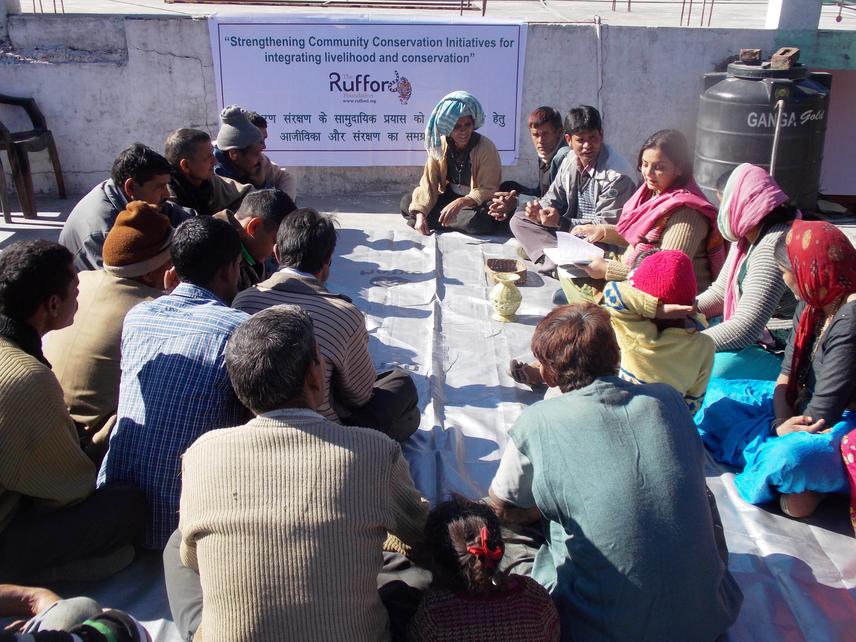Shalini Dhyani
Project aims to create and develop diverse livelihood opportunities for locals by using locally available resources for strengthening community conservation initiatives.

Kedarnath Wildlife Sanctuary (KWLS) in Western Himalaya is a hub of faunal and floral diversity. Forests of KWLS are habitat to many threatened species viz. musk deer, snow leopard, Himalayan Tahr, Monal pheasant and other important ungulates and birds. Upper Kedar Valley and our target project area is a prosperous area in terms of forest biodiversity, indigenous and traditional agro-biodiversity and spiritual as well as cultural diversity. Village on the Sanctuary fringes depend on the forests for their various subsistence demands. Most of these villages are very poor in terms of their socio-economic conditions. It is significant to improve the habitat integrity of these forest adjacent villages while improving the incomes of the people as well as substituting ecosystem services which people derive from the Sanctuary Forests. It is surprising to see that indigenous and traditional values of conservation are been destabilized by the youths, that can be attributed to increasing globalisation, commercial tourism severely affecting survival of the species and their unique habitats. It is highly desirable to enhance community participation in forest management which would improve forest management, enhance local livelihood and potentially reduce the scope of many forest problems. There is a crucial need for managing Sanctuary fringes considering the village economy, social issues and resource requirements. Supporting and providing better livelihood opportunities can be a viable option for minimizing pressure and managing biodiversity of the area through active community participation.
Our project aims for an Integrated Conservation Program to empower the local Garhwali community for sustainably managing these forests. Project will use indigenous and traditional values as a major approach with special emphasis on cultural and spiritual values of the area in achieving the project objectives and goal. Project activities will include establishment of a Livelihood Resource Centre (LRC) for integrating livelihood and conservation for strengthening Community Conservation Initiatives (CSI) as a first step. We plan to explore locally available cost effective resources for generating economy and enhancing livelihood sources of locals. Capacity building programmes will include value addition and bio-prospecting of indigenous crops, locally available wild edibles and promoting round the year vegetable cultivation and eco-tourism in the area.
We expect that after a year, we will be able to shift the attitudes of the people at a certain extent through meaningful and economic engagement. Through the proposed income generating and livelihood enhancement activities socio-economic condition of the communities are expected to improve in a sustainable manner in next few years. Project activities conducted in the entire project duration will contribute to the body of knowledge as well as equip communities with livelihood enhancement skills using the tourism and market potential of the area.